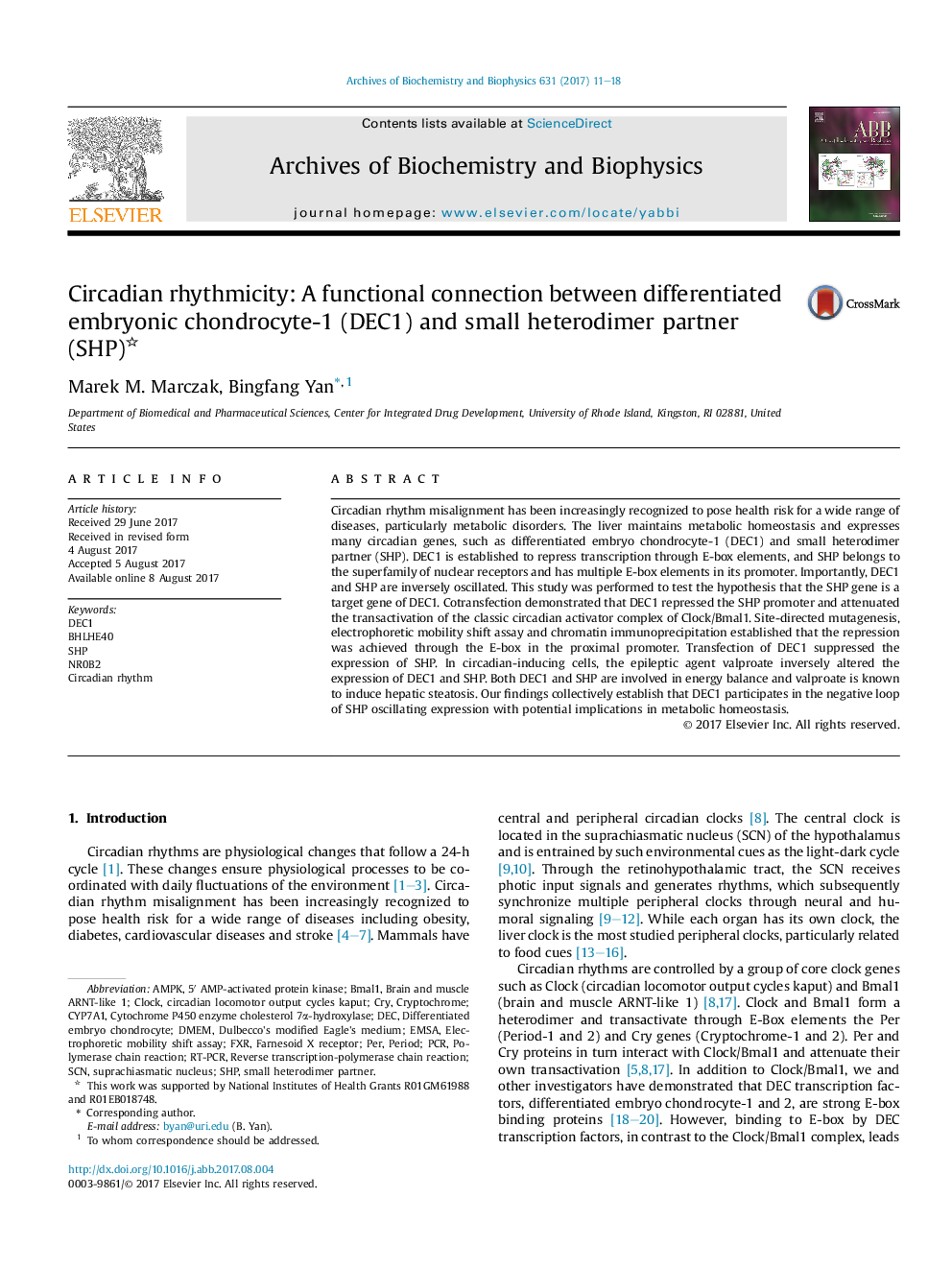| Article ID | Journal | Published Year | Pages | File Type |
|---|---|---|---|---|
| 5504298 | Archives of Biochemistry and Biophysics | 2017 | 8 Pages |
Abstract
Circadian rhythm misalignment has been increasingly recognized to pose health risk for a wide range of diseases, particularly metabolic disorders. The liver maintains metabolic homeostasis and expresses many circadian genes, such as differentiated embryo chondrocyte-1 (DEC1) and small heterodimer partner (SHP). DEC1 is established to repress transcription through E-box elements, and SHP belongs to the superfamily of nuclear receptors and has multiple E-box elements in its promoter. Importantly, DEC1 and SHP are inversely oscillated. This study was performed to test the hypothesis that the SHP gene is a target gene of DEC1. Cotransfection demonstrated that DEC1 repressed the SHP promoter and attenuated the transactivation of the classic circadian activator complex of Clock/Bmal1. Site-directed mutagenesis, electrophoretic mobility shift assay and chromatin immunoprecipitation established that the repression was achieved through the E-box in the proximal promoter. Transfection of DEC1 suppressed the expression of SHP. In circadian-inducing cells, the epileptic agent valproate inversely altered the expression of DEC1 and SHP. Both DEC1 and SHP are involved in energy balance and valproate is known to induce hepatic steatosis. Our findings collectively establish that DEC1 participates in the negative loop of SHP oscillating expression with potential implications in metabolic homeostasis.
Keywords
DMEMCryptochromeCYP7A1RT-PCRFXRSHPDEC1DECbrain and muscle ARNT-like 1SCNAMPK5′ AMP-activated protein kinaseBmal1farnesoid X receptorDulbecco's modified Eagle's mediumElectrophoretic mobility shift assayperPeriodCircadian rhythmClockEMSA یا electrophoretic mobility shift assay small heterodimer partnerSuprachiasmatic nucleusreverse transcription-polymerase chain reactionpolymerase chain reactionPCRcircadian locomotor output cycles kaputCry
Related Topics
Life Sciences
Biochemistry, Genetics and Molecular Biology
Biochemistry
Authors
Marek M. Marczak, Bingfang Yan,
